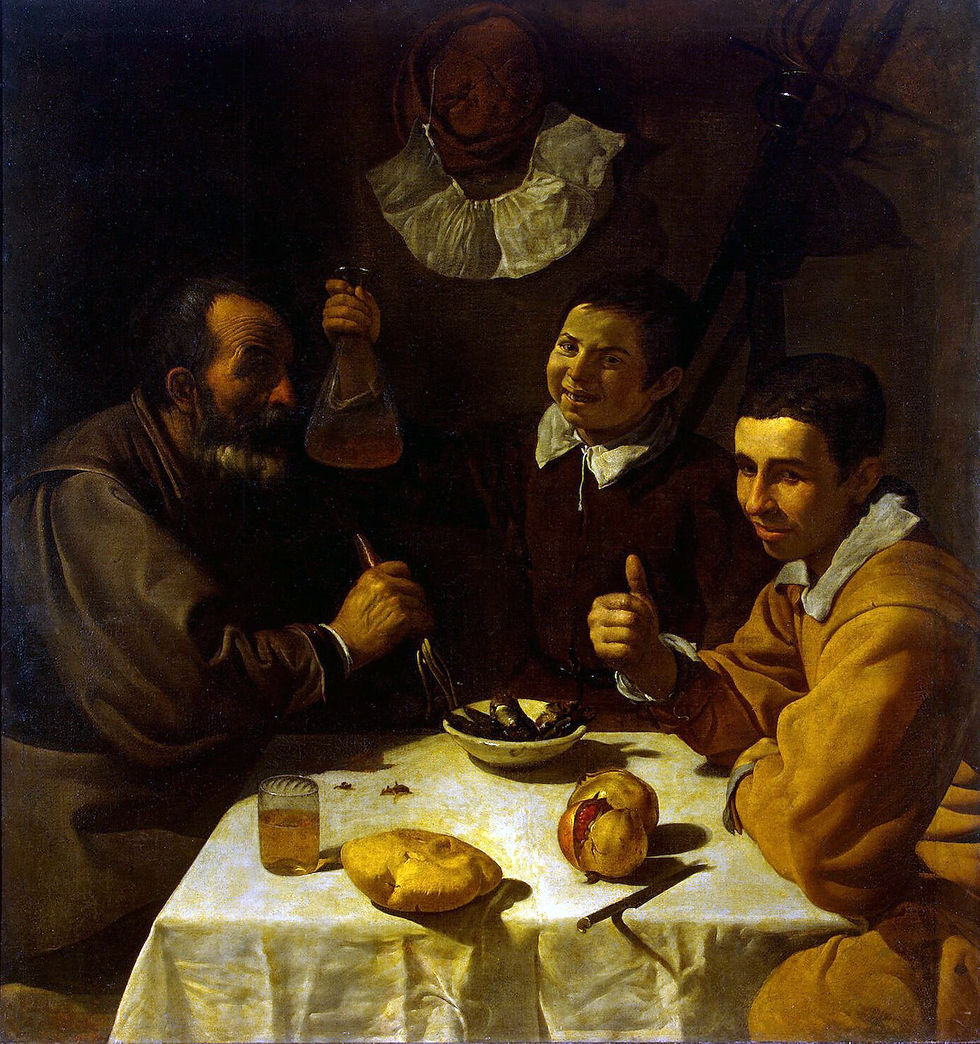
THE DRUNKARDS or THE FEAST OF BACCHUS (LOS BORRACHOS)
Diego Velázquez (1599-1660)
1628/29
Oil on canvas, 165 x 255 cm
Museo del Prado, Madrid, Spain
Velázquez painted this picture of Bacchus surrounded by eight drinkers for Philippe IV, who hung it in his summer bedroom. This work is not only unique in its genre, but also stands out in Spanish painting in general because drinking scenes were very rare (unlike in Dutch or Flemish painting). Drunkenness was considered a despicable vice in Spain. The word ‘borracho’ (‘drunk’) was a terrible insult.
This work shows harvest workers toasting. It can be interpreted in a number of ways and is still a subject of discussion among art historians. William Sterling (Velázquez and his Works, 1865) described it thus: “With The Drinkers, Velázquez proves that, despite painting princes, he has not forgotten how to paint grotesque figures. This composition of nine life-sized figures shows a vulgar Bacchus, crowned with vine leaves and sitting on a barrel; he places a similar crown on his comrade’s head. The ceremony is carried out with that gravity so typical to drunkards, in the presence of a few peasants affected by the wine to varying degrees. One is seated, lost in sombre meditation; another, his cup well-filled, has just delivered a joke to a third man which provokes a burst of laughter, hence the distortion of his jaw. A fourth figure, slightly behind the others, has drunk to excess like the third; rolling around on a bench, he contemplates the goblet in his hand. In terms of force of character and lively colors, this painting has never been surpassed; the humorous tone of the piece assures Velázquez’s status as The Andalusian Hogarth.”
These peasants are celebrating the end of the harvest and the changing of the season. They are throwing a joyful bacchanal in honor of Bacchus (the Roman name for Dionysus), god of excitement, frenzy and enthusiasm for wine. It seems that Rubens may have inspired Velázquez with his description of a masked ball in honor of the Archduke Albert the Pious and his wife Claire Eugénie, which had taken place in Brussels several years earlier; but the artist may also have had another event in mind: a cavalry procession in Madrid not dissimilar to the painting...
A FEW MORE VELÁZQUEZ' PAINTINGS, EXHIBITED OR NOT*

* The Supper at Emmaus

* Kitchen Maid with the Supper at Emmaus, crop

Luncheon

An Old Woman Cooking Eggs

* Peasants at the Table (El Almuerzo)

